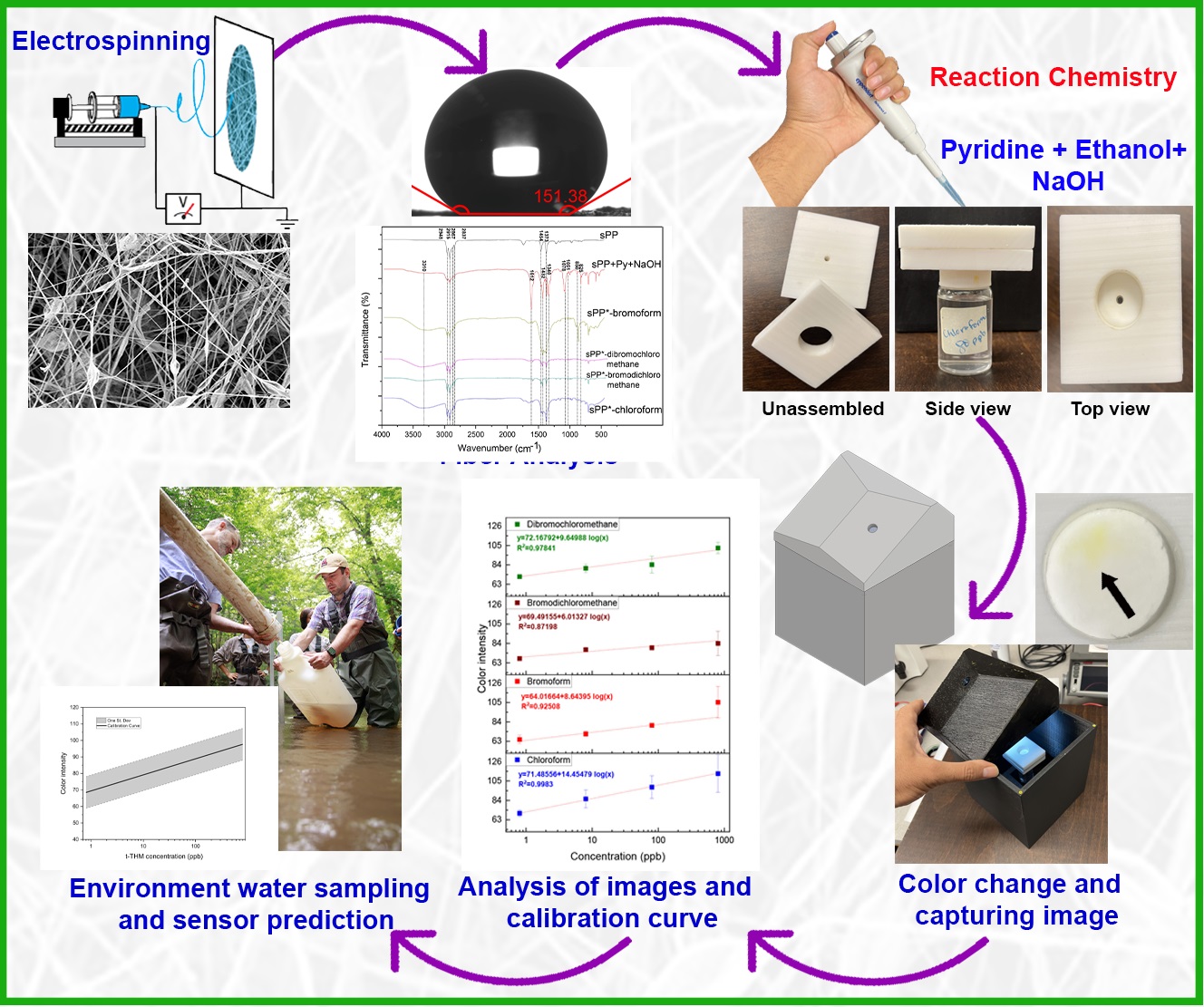2022 Annual Meeting
(287e) Point-of-Need Quantitative Detection of Trihalomethanes in Environmental Water Samples Using a Highly Sensitive and Selective Fiber-Based Preconcentration System
Authors
Duprey, C., Materials Engineering And Nanosensor (MEAN) Laboratory, Department of Chemical and Biological Engineering, The University of Alabama
Linn, E., The University of Alabama
Veres, S., University of Alabama
Terry, L., University of Alabama
Elliott, M., University of Alabama
Wujcik, E., The University of Alabama
Lu, Y., Georgia Institute of Technology
Chen, G., University of Alabama
Penners, N., University of Alabama
Nowadays with developing the industries all over the world and consequently contamination caused by their activities, whole of our ecosystem is in a threat. One of the main serious problems that we face is the by-products of water treatment system, introducing the halogenated compounds, specifically trihalomethanes (THMs), to the drinking water. US Environmental Protection Agency (USEPA) limited the concentration of THMs in the drinking water to below 80 ppb due to serious health problem these compounds occur in human body. In this study, a super hydrophobic polypropylene (sPP) fiber mat is used in a THM detection system based on colorimetric reaction chemistry. The reaction chemistryâFujiwara reactionâhas been known for over a century to give a visible red/pink chromophore under visible light absorption but has not been used for detection of halogenated species in water down to ppb-levels due to its hinderance by water. The highly sensitive and selective sensor operates when the preconcentrated THM in the vapor phase becomes trapped in the liquid phase of the Fujiwara chemistry, on the surface of the sPP fibers. sPP fiber mat is electrospun with a special âbead-on-a-stringâ morphology leading to a hydrophobic mat with over 150° water contact angle which ease the detection of THMs in lower concentrations in the range of ppb. The color change happened in the surface of the fiber mat can be analyzed with any image analytical software to measure the quantitative color intensity corresponded to accurate concentration of THM. In this study, we measured THM content in the water in the level of below 8 ppb with a very good approximation. This cost-effective, selective, portable device with sensitive THM detection enables on-site users to evaluate the quality of drinking water.


